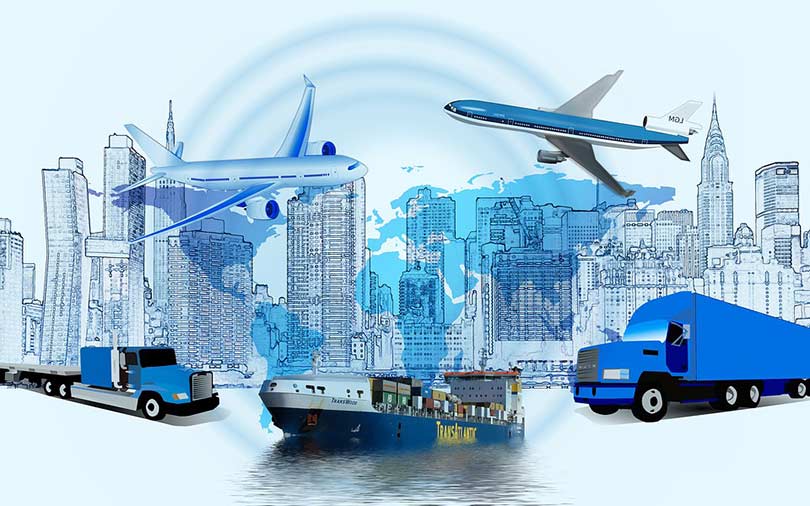
This Gurugram startup takes care of products in transit by using AI sensors


On its way from a warehouse to a store, a precious package you just ordered from Flipkart or Amazon may encounter enough jolting bumps to cause such profound damage that the product is barely recognisable when it finally arrives at your doorstep.
In order to prevent such heart-breaking singularly-jarring events, Gurugram-based HAL Robotics has come up with a combination of sensors that fit directly inside your precious package to record the level of shock, temperature and humidity the parcel encounters in transit, and to take action accordingly, so the product arrives safe to your doorstep.
Apart from monitoring products on their way, the company’s sensors also keep an eye on them when housed in transit, said Prabhakar Chaudhary, founder and managing director of HAL Robotics.

Chaudhary started his company in October 2016 after hearing e-commerce players complain about operational inefficiencies in their supply chain and logistics verticals. "Once a consignment moves out and till the time it reaches its destination, there are a lot of blind spots -- the time the product is out of direct visibility. We wanted to solve this issue," he said.
The logistics solution project had no sooner roared than Chaudhary and his team saw huge opportunities coming from other sectors as well, namely, pharmaceuticals, food, dairy, life sciences and chemicals. Commenting on the food sector, Chaudhary said, "More than 45% of food produced or shipped doesn’t reach customers. Also, some of these companies transport goods that need special care or specific conditions, otherwise they become unsellable and cause a lot of strain for these companies." He added that his company came up with solutions that "target product visibility and product health during transit and temporary housing".
However, on the technology front, Chaudhary didn't want to build solutions that already existed on the market or were simply fitted into warehouses. He focused on a more real-time data solution and soon came up with an artificially-intelligent IoT (Internet of Things) network comprising of three hardware products -- Robo, Snitch and Neo – as well as a dashboard for customers to watch.

While Robo is self-programmable, fault-tolerant, capable of multichannel-communication and equipped with in-house sensors, Snitch is a unidirectional sensor that monitors health and environment of an asset. Neo, on the other hand, is a bi-directional sensor that monitors and manages health and environment of a product.
Using this combination, HAL Robotics came up with two systems called RoboTrack and RoboTemp. While RoboTrack manages task force, locates shipments and tracks deliveries of even the smallest items, RoboTemp is a self-learning wireless thermostat that ensures optimum environment for assets and sends out timely alerts.
How does it work?
Chaudhary gives the humble example of a vaccine being transported to your place. In this case, the Robo (see above, not to be confused with RoboTrack and RoboTemp) placed close to the refrigeration unit for the vaccine talks to the server, alerting it to the conditions of the vaccine, namely, temparature, balance of the unit, etc. It gets all this data from Snitch, and it alerts the server via a machine-to-machine SIM or chip.

If an oddity in the data is found, the server sends a decision to Robo, which communicates it to Neo for action. For example, vaccines are best stored at four-degree centigrade. If the temperature goes beyond that, Neo will be told to bring it down. But for Neo to do that, it has to be placed in the refrigeration unit such that it can start adjusting the unit’s controls. So HAL affixes Neo to the power relay of the unit. Chaudhary clarified that Neo's position can be changed, depending on the case.
All the workflow mentioned above is represented via software on a dashboard for the customer to watch notifications and alerts.
Chaudhary explained that the IoT network is intelligent because the servers are running on machine-learning models trained to take action on inputs. "It is intelligent enough to take a decision based on all the data it is being fed," he explained, adding that the solution helps in cutting down expenditure of his customers.

More in the pipeline
Chaudhary and his team are not just stopping here. The founder said that he had identified another use for intelligent IoT systems in the assembly lines of pharma, dairy and other sectors. He said his team is working on deploying wireless sensors in such assembly lines by the end of the year.
Currently, the bootstrapped company, which has spent around $700,000 so far on operations, counts among its clients Maruti Suzuki India, Parekh Logistics, SKM Foods, Reckitt Benckiser and Drums Food.
